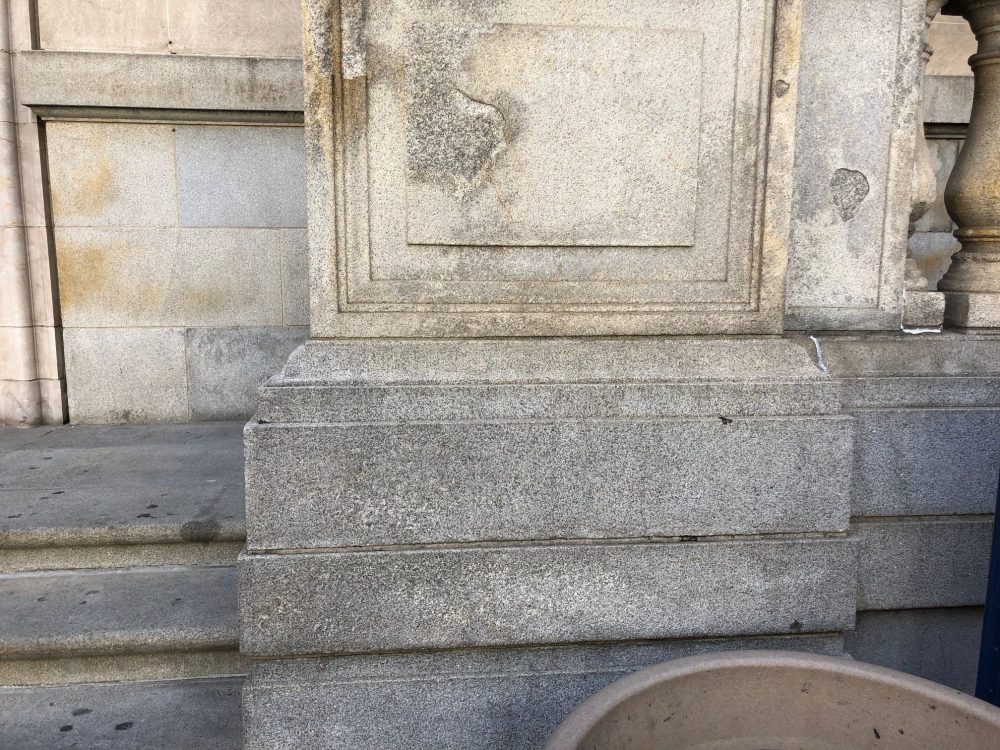Graffiti Removal
Graffiti is a common nuisance affecting historic buildings everywhere. Unfortunately, the graffiti itself can be less damaging than the actions taken to remove it. To prevent unnecessary damage, correct procedure must be followed in order to remove graffiti appropriately and safely.
Careers in Historic Preservation

First, our conservator’s will analyze the substrate on which the graffiti has been applied. Whether the material is masonry, wood, metal, a painted surface, or something else; what specific type of masonry, wood, etc.; and how that material has weathered since installation. Fully understanding the substrate is essential to avoid damage during the graffiti’s removal.
Once the substrate has been analyzed, we turn our attention to the graffiti. Spray paints, permanent markers, brushed paints, tar, and other materials are commonly used to mark historic buildings. Among spray paints, there are differing types, compositions, and delivery systems that need to be understood before removal can begin.
Once the substrate has been analyzed, we turn our attention to the graffiti. Spray paints, permanent markers, brushed paints, tar, and other materials are commonly used to mark historic buildings. Among spray paints, there are differing types, compositions, and delivery systems that need to be understood before removal can begin.
NPS Preservation Briefs
Because the substrate, media, and application method inform our approach to removal, all variables must be brought to light before removal can begin.
Our analysis complete, we can now determine the best combination of cleaning products and methods. Leveraging careful research and professional experience, plus the use of experimental mock-ups, we can identify the most effective and least harmful approach. Mock-ups help to demystify the complex stain and substrate problem and allow us to rigorously test our approach, further reducing risk of damage.
After our mock-up testing has concluded, the very best cleaning method is chosen, and the graffiti removal begins. Trained craftsmen who understand the materiality of the building are deployed to perform the removal work. Besides protecting the building itself, they work to protect any nearby material that might be harmed by our cleaning methods.
Once the graffiti has been removed, our conservators may recommend an additional protective coating suitable to the unique substrate and its current condition.
Our analysis complete, we can now determine the best combination of cleaning products and methods. Leveraging careful research and professional experience, plus the use of experimental mock-ups, we can identify the most effective and least harmful approach. Mock-ups help to demystify the complex stain and substrate problem and allow us to rigorously test our approach, further reducing risk of damage.
After our mock-up testing has concluded, the very best cleaning method is chosen, and the graffiti removal begins. Trained craftsmen who understand the materiality of the building are deployed to perform the removal work. Besides protecting the building itself, they work to protect any nearby material that might be harmed by our cleaning methods.
Once the graffiti has been removed, our conservators may recommend an additional protective coating suitable to the unique substrate and its current condition.











